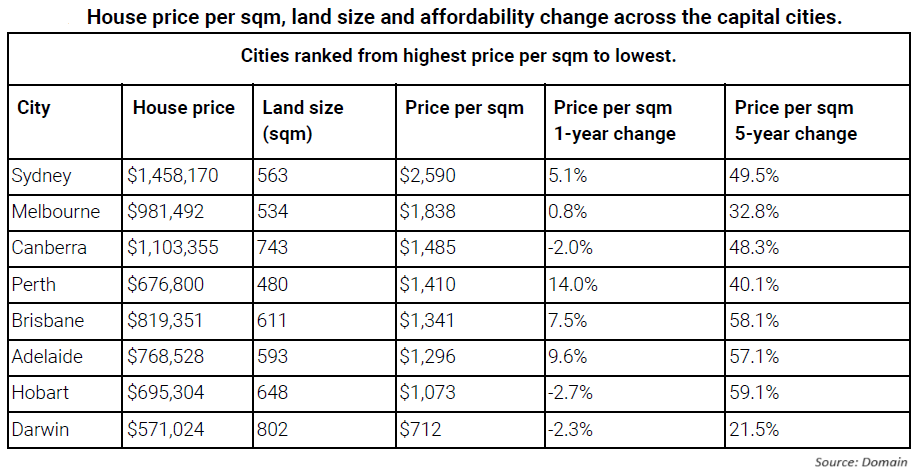Government urged to ensure land-use policies meet housing needs

Australia’s house and unit prices per square metre in capital cities have shown an upward trend, underlining the country’s position as having some of the world’s highest property costs despite its low population density.
Domain’s latest Price Square Metre Report has indicated that this increase is driven by a combination of rising prices and a reduction in land and floor sizes, marking a significant change in the country’s housing dynamics and land utilisation.

According to the report, the price per square metre, calculated by dividing the total sold price by the land or floor size, is a crucial metric for understanding changes in density and its impact on prices across Australia.
The findings highlight an inverse relationship between land size and price per square metre: as land size decreases or house prices increase, the price per square metre rises. This trend points to a densification of urban areas and increasing land premiums.
“Australia has some of the world’s least densely populated cities and is home to some of the most expensive property markets,” said Nicola Powell (pictured), chief of research and economics at Domain. “Despite this, the desire of people to live in the capital cities has meant that more are trying to squeeze into them and are competing for housing. This housing demand needs to be countered with the growth of dwellings to slow the overall growth in home prices.”
Despite the intuitive notion that higher density might limit homeownership opportunities, the report suggests the opposite, suggesting that increased density can enhance affordability, given the finite nature of available land amid a growing population.
“The decline in land size is due to the increased urban density,” Powell said. “While it might seem surprising, this shift is essential for preserving and improving housing affordability for the broader population.
“Without the shift towards greater density and smaller land sizes over the past two decades, house prices would be vastly higher than they are today – higher by 44% in Perth, 16% in Adelaide, and 14% in Melbourne.”
Powell advocates for government action to prioritise density to make homeownership more accessible for Australians, highlighting the role of price per square metre metrics in identifying more affordable areas.
“Estimates suggest a 10% increase in housing stock lowers prices between 15% and 30%,” she said. “Knowing the price per square metre helps buyers find where the land is cheaper and identify bridesmaid suburbs, but prioritising increasing density from the government will help homeownership become more accessible for Australians.”
Want to be regularly updated with mortgage news and features? Get exclusive interviews, breaking news, and industry events in your inbox – subscribe to our FREE daily newsletter. You can also follow us on Facebook, X (formerly Twitter), and LinkedIn.



